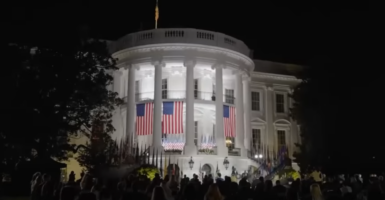Middle School Ends Mandatory CNN Viewing In Classrooms
Up until 2019, the Norwin School District in Westmorland County, Pennsylvania, was watching Channel One News as part of their morning school announcements. But in 2019, the school district mandated a change, removing Channel One News and replacing it with CNN 10.

Up until 2019, the Norwin School District in Westmorland County, Pennsylvania, was watching Channel One News as part of their morning school announcements. But in 2019, the school district mandated a change, removing Channel One News and replacing it with CNN 10. Now, after a narrow vote, the Norwin School Board voted to end mandatory CNN classrooms in its middle school.
The Norwin School Board’s vote was tight, a 5-4 margin, but it came after numerous parent complaints saying the CNN 10 broadcasts were biased. CNN 10 describes itself as “compact on-demand news broadcasts” that are prime for those on the go or in classrooms. The vote, though, was not a complete ban of having CNN in classrooms. Instead, it simply took CNN being mandatory each morning but still gave teachers the choice.
“On February 14, 2022, the Norwin School Board voted and approved the following: To remove watching TV during homeroom at the Middle School unless it is either student, teacher or administrator driven to allow students to socialize and interact with each other,” a Norwin School District representative explained to Fox News. “It was further clarified that the board will allow teachers to use discretion and broadcast videos from all sources, including videos pertaining to patriotic holidays,” the representative continued.
One mother who was fully against having her son in a CNN classroom said that the broadcasting of CNN 10 is “feeding [her son] every day that CNN is a label you can trust.” She also made note that she feels CNN 10 “is not unbiased” in that it constantly recommends students to “visit our friends on CNN.com.”
But the school board wanted to clarify that their vote didn’t mean a complete CNN removal from the classroom. In a statement to Newsweek, they said that “the action to remove watching TV during homeroom at the Middle School unless it is either student, teacher or administrator driven [is] to allow students to socialize and interact with each other.” Then the statement continued by saying, “While the motion to remove watching TV during this time included CNN10 Student News, it did not include completely eliminating the program.”
It was unclear what “teacher-driven” meant to some, so the board clarified saying that teachers will still be using television as a tool, “including CNN10 Student News videos, for specific instructional purposes.” Also, in their statement to Newsweek, the board said that TV viewing was for more than just daily news. Now they will be using television for announcements to include current events, school-driven assemblies, and patriotic holidays. The board wrote, “This continues to permit the inclusion of content to be shown from all news sources as talking points or debate.”
This vote, though, was not met with acceptance by all. The narrow 5-4 vote showed how split things were with opponents feeling the school board is overstepping. Megan Zobb, a seventh-grade global studies teacher, told the board that teachers had no desire to indoctrinate their students by having CNN in the classroom. She also said that the teachers did not want this kind of school board micromanaging.
William Essay, a dissenting school board member and retired teacher, says that the school board was moving into an area that the board should not enter. This begs the question so many have posed recently. How much voice should school boards have when it comes to political affiliations? Is a CNN classroom overstepping or is it just one more way for students to get a rounded view of the world? These issues do not look like they will be resolved quickly or easily, especially when half the parents are for and the other half are against, regardless of the issue. One thing for certain, though, is that parents want more say so and they are not being quiet about their stance.



